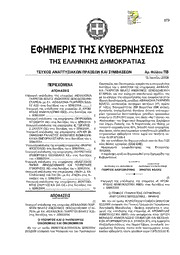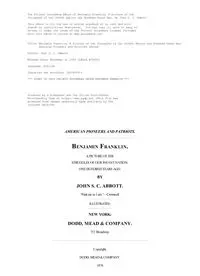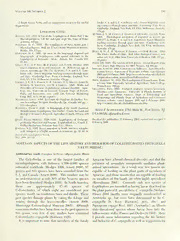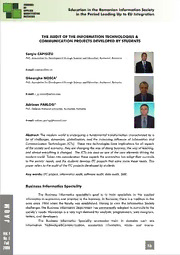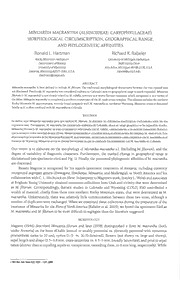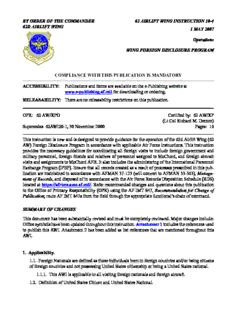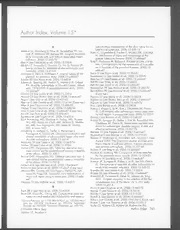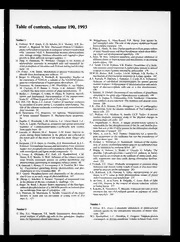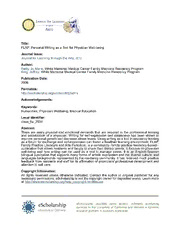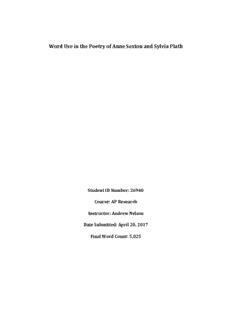
Word Use in the Poetry of Anne Sexton and Sylvia Plath PDF
Preview Word Use in the Poetry of Anne Sexton and Sylvia Plath
Word Use in the Poetry of Anne Sexton and Sylvia Plath Student ID Number: 26940 Course: AP Research Instructor: Andrew Nelson Date Submitted: April 20, 2017 Final Word Count: 5,025 Introduction According to the American Foundation for Suicide Prevention, depression and isolation are among the many warning signs of suicide. Poets Anne Sexton and Sylvia Plath are examples of poets who suffered from depression and suicidal thoughts (Pennebaker 517). Using a computer text analysis software to compare the poems of 9 suicidal poets and 9 non-suicidal poets, University of Texas psychologists Shannon Wiltsey Stirman and James W. Pennebaker discovered that suicidal poets used pronouns differently than non suicidal poets in that they used words such as “I” significantly more often than non-suicidal poets (Pennebaker 518). They used less plural pronouns than non-suicidal poets and often didn’t write about interacting with other people in their poems (Pennebaker 517). Pennebaker directly states that social isolation is “pushing the probability of suicide” (Marano 43). This study discusses whether or not suicidal thoughts are a contributing factor to referencing certain words in one’s poetry more often by focusing on the word use of two suicidal poets, Anne Sexton and Sylvia Plath. Anne Sexton and Sylvia Plath both wrote confessional poetry and at one point even corresponded with one another, influencing each other’s work (Keenan 109). According to Katherine Rose Keenan, whose article was published in the Plath Profiles, Plath and Sexton’s correspondence was significant as Plath’s poetry can be seen to develop alongside Sexton’s poetry when they met (Keenan 110). The goal of this study was to determine if those similarities could also be found using statistical methods. The results of this study look into whether or not mental state can be determined through word count analysis. Plath and Sexton were included in a group analysis of suicidal poets in a study conducted by Dr. James W. Pennebaker in “Word Use in the Poetry of Suicidal and Nonsuicidal Poets” but their word use has yet to be studied in great depth as individuals (Pennebaker 519). The results of my study argue that two people who have similar mental hardships should not necessarily be grouped together as suicidal. Anne Sexton and Sylvia Plath were both suicidal but according to my data, they are very different in terms of word use. The results of this study warn against the mislabelling of people that are mentally ill as being suicidal simply because they show certain warning signs. People that are mentally ill must be treated as individuals with individual rights. Literature Review Subjective Methods The vast majority of researchers in this field have taken a more subjective approach when analyzing the language of suicidal poets. Subjective research refers to research that does not involve statistics and objective research refers to research that does involve statistics. Many of these researchers are not as well known in the academic community as the two most critically acclaimed psychologists in the field, Dr. James W. Pennebaker and Dr. Kay Redfield Jamison. “When Ariel met Mercy Street” by Katherine Rose Keenan was published in a small journal that focused exclusively on the life and career of the late American poet Sylvia Plath. Keenan was one of the first poets to take an interest in the potential that lies in studying the correspondence of Sylvia Plath and fellow poet Anne Sexton. Due to their many similarities, many researchers have also chosen to focus on Plath and Sexton when analyzing the life and careers of suicidal poets. In Keenan’s research, she concluded that researchers in the field of analyzing the linguistics of suicidal and nonsuicidal poets, who have closely examined the life and work of both Anne Sexton and Sylvia Plath, do not know the number of times they met nor do they know the exact nature of their correspondence (Keenan 110). Researchers generally agree that Sexton and Plath did write to one another and met outside of school at least once (Keenan 109). Both poets committed suicide and had a variety of other similarities to one another such as gender and marital status (Keenan 110). Multiple researchers agree that the correspondence between Sexton and Plath is significant in some way due to how they supposedly met and discussed their mental health and writing together (Keenan 109). Most researchers agree on a few fundamental things regarding the two suicidal poets which have shaped how researchers conduct their studies (Keenan 110). For example, experts in the field agree that Sexton was delusional, meaning simply that she had strict, unrealistic beliefs about both herself and the world around her (Keenan 109). Dr. Herbert Hendin, acclaimed researcher on mental illness and suicide and author of “The Suicide of Anne Sexton” writes that according to the accounts of Martin Orne, Anne Sexton’s psychologist, Anne Sexton was so lacking in self-esteem at 28 that he searched for something for her to do that would make her life worthwhile (Hendin 270). Orne discovered that Sexton promoted the idea that she was a “fragile genius” to her friends and that she was often reckless and promiscuous. (Hendin 270). The late Diane Middlebrook, once a professor at Stanford and author of critically acclaimed biographies on both Sexton and Plath, also concluded that some of the stories Sexton told Dr. Orne during her therapy sessions were fabricated and believed that Sexton was very impulsive and unstable (Hendin 274). Dr. Hendin and Dr. Middlebrook reached these conclusions by analyzing Sexton’s therapy tapes. Part of the reason that many researchers choose to avoid analyzing Sexton’s therapy tapes is due to how Sexton may have elaborated some of her stories. Another reason researchers choose to avoid analyzing those tapes is due to controversies regarding whether or not that would be considered ethical research. Dr. Pennebaker, D.S Berry and J.M Richards collaborated on a paper titled “Lying Words: Predicting Deception from Linguistic Styles”. In the study the paper details, researchers found that liars referenced themselves less and possessed less complex perceptual skills when compared to honest people. Liars also were shown to reference negative emotion more often than honest people (Pennebaker 310). Many researchers believe that there is a hidden phenomenon in the lives and ultimate deaths of Sexton and Plath, they’ve called this phenomenon by many different names, the most popular being “The Sylvia Plath Effect” coined by psychologist James C. Kaufman in 2001. The “Sylvia Plath Effect” argues that poets are at greater risk of developing a mental illness and committing suicide (Kaufman 106). Other researchers have coined the terms the “Mad Genius Phenomenon” or the “Anne Sexton Effect” or “The Electra Complex” as a way of discussing what exactly may have been behind the suicide of Plath and Sexton. The “Mad Genius Phenomenon” is one of the most popular terms and simply means that creative artists in general are more likely to become mentally ill (Jamison 200). The term and its meaning was coined by critically acclaimed psychologist Kay Redfield Jamison but has also been disputed. Judith Schlesinger, a researcher from Learning Research Institute in San Bernardino, California, wrote a paper called “Creative mythconceptions: A closer look at the evidence for the "mad genius" hypothesis” and was one of the first to critique Jamison’s work. One of the biggest problems that she found is the lack of an unchanging set of variables used to measure creativity and mental illness (Schlesinger 105). She found that there are also no large scale statistics that directly support Jamison’s claim that people of one profession are more likely to have a mental illness than other people (Schlesinger 106). To further her point, she stated in her paper that The National Institute of Mental Health conducted a large scale study on Bipolar Disorder but they did not find possible correlation between creativity and mental illness (Schlesinger 106). Dr. R.A. Lewis wrote a paper titled “A Unquiet Mind: A memoir of moods and madness” and concluded from his research into Jamison’s life that she has a tendency to beautify her inner demons and disorder (Lewis 205). She refused to take lithium for her disorder which caused her mood fluctuations to become increasingly erratic (Lewis 206). Other researchers did not necessarily disagree with Jamison’s idea of the “Mad Genius Phenomenon” but had slightly different takes on the idea of there being a possible trend among suicidal poets. Kaufman, who coined the term “Sylvia Plath effect”, also heavily discusses the term the “Anne Sexton Effect” in his research. His research on creative writing and mental illness has found that writers are more likely to become mentally ill than artists. In the writers group, poets are at greater risk than everyone else while female poets are at greater risk of developing a mental illness than male poets (Kaufman 107). The reasons behind these findings are not as well established (Kaufman 107). The “Anne Sexton Effect” is discussed by multiple researchers and alludes to the idea that Anne Sexton’s influence on Plath during the beginning of their careers, which most researchers agree was significant to her development as a young poet, was also significant to the development of her mental illness (Kaufman 106). Meanwhile, the “Electra Complex” was discussed by Shu-hua Chung of Tung-Fung Institute of Technology in her article “The Electra Complex in Sylvia Plath and Anne Sexton’s Poems “ and heavily references the work of both Plath and Sexton. Chung concluded that the difficult relationship both authors had with their fathers contributed to their worsening mental illness and ultimate suicide (Chung 102). In summary, the idea that there exists a connection between mental illness and the creative genius of poets has been heavily disputed and discussed in the psychology community (Chung 102). Researchers have not been able to reach a consensus using subjective methods of research (Chung 103). Most of the researchers I have mentioned thus far analyzed pieces of literature manually and did not use mathematics in any way to draw their conclusions. Objective Methods Dr. James W. Pennebaker is the leader in research on suicidal poets and mental illness from an objective standpoint. He used the computer software Language Style Matching (LSM) to calculate some of the few statistics that revolve around the specific word choices of suicidal poets. The specific study, published in “Word Use of Suicidal and Nonsuicidal Poets”, has not yet been replicated. The results of the experiment were consistent over the course of the careers of multiple poets so becoming more well known was not a major factor (Pennebaker 517). Dr. Pennebaker also confirmed the popular theory that suicidal poets used personal pronouns more often than nonsuicidal poets. The statistics aspect of his research suggest that suicidal poets used words like “I” and “me” s on average 4% of the time at the start of their careers compared to nonsuicidal poets who used pronouns pertaining to themselves only 2.5% of the time (Pennebaker 518). Dr. Pennebaker acknowledged that his research is not conclusive due to the small sample size and the apparent conclusions that have yet to be explained by researchers and psychologists in the field. He has not been able to definitively conclude what the patterns of word choices made by both suicidal poets and nonsuicidal poets imply. He did however, make it clear that the chances that his findings occurred purely by chance was less than .01% (p< 01%) (Pennebaker 518). Dr. Pennebaker was able to use statistics to support and also at times conclude against some of the most common findings made by other researchers over the course of multiple experiments. Another source that many researchers in the field referenced is titled “Linguistic Styles: Language Use as an Individual Difference” by James W. Pennebaker and Laura A. King showed how a person’s writing can reflect a lot about their personality. Pennebaker and King discovered that a person that had simpler writing was less open and influenced Stirman and Pennebaker in further trying to discover whether there really was that strong of a connection between a person’s emotional state and the way they write (Pennebaker 125). Dr. Pennebaker had used LSM in “Secret life of pronouns” and was met with great success. A few years earlier in 1997, Dr. Pennebaker had conducted a study where unaware judges were selected to rate the writings of people that wrote about both subjective and emotional topics. The problem with this study was that the judges had trouble reaching an agreement and the results garnered from the study were not consistent from study to study (Pennebaker 142). Compared to that, the results garnered from using LSM were consistent from study to study (Pennebaker 143). The majority of Dr. Pennebaker’s statistics created using LSM imply the same idea that many other researchers have concluded using subjective methods of research. The idea that suicidal poets are more self-centered and isolated has been suggested by many researchers in the field, including Dr. Kay Redfield Jamison and lesser known researchers In “Words of Wisdom: Language Use Over the Lifespan” by Dr. Pennebaker, Dr. Pennebaker uses LSM to analyze work written in the beginning, middle and end of an author’s career as a way of further exploring the potential of the software and he succeeded in disproving many misconceptions about suicidal poets (Pennebaker 98). One of which was that suicidal poets are often negative and reference death frequently in their work (Pennebaker 99). Using a computer text analysis software to compare the poems of 9 suicidal poets and 9 non-suicidal poets, University of Texas psychologists Shannon Wiltsey Stirman and James W. Pennebaker discovered that suicidal poets used pronouns differently than non suicidal poets in that they used words such as “I” significantly more often than non-suicidal poets. They used less plural pronouns than non-suicidal poets and often didn’t write about interacting with other people in their poems (Pennebaker 517). These findings in particular support the idea that social isolation (leading to depression) can increase the chances of a person committing suicide (Pennebaker 519). In “Word use of suicidal and nonsuicidal poets”, Dr. Pennebaker heavily referenced “Touched with fire: manic-depressive illness and the artistic temperament” by Kay Redfield Jamison. Pennebaker and co-author Shannon Wiltsey Stirman, both professors at University of Austin Texas and Stanford respectively, built upon the work of Jamison by analyzing her research and tried to be even more precise than Jamison with a detailed criteria for collecting samples from a large number of poets (over 100) in order to ensure their carefully collected data could sufficiently back up their findings. Stirman and Pennebaker noted how Jamison could at times be generalizing and made the point that most of the poets used in Jamison’s research did not actually commit suicide despite having a mental illness (Pennebaker 519). They built upon Jamison’s research by making sure that they selected multiple works from well known poets that were written either a long time before, in the middle, or close to the time they committed suicide in order to show correlation (Pennebaker 519). It is interesting to note that not all the poets Jamison sampled in her research met such detailed criteria (Pennebaker 519). Stirman and Pennebaker discovered that even though the poet that eventually committed suicide did use more first person singular words, they did not necessarily use less communication words which is what the researchers originally thought the data would also show. However the two researchers did find that, similar to the results found by Dr. Pennebaker in another study he did, suicidal poets did not talk negatively about death anymore than poets that were not suicidal which is a common misconception (Pennebaker 519). Overall throughout their lives, the suicidal poets did refer to themselves more often in their work than the nonsuicidal poets but they did not necessarily increasingly do so towards the end of their lives (Pennebaker 519). However it is interesting to note that suicidal poets did refer to other people more using plural pronouns more often during the middle of their lives than nonsuicidal poets (Pennebaker 519). Once the suicidal poets were closed to reaching their lives, this number dropped significantly below that of the nonsuicidal poets (Pennebaker 519). Throughout their lives, the suicidal poets over all used more sexual words than the nonsuicidal group (Pennebaker 520). This was an interesting observation that was not expected and has yet to be explored in depth (Pennebaker 520). The study’s results supported the idea that suicidal individuals aren’t as attached to others as normal people and that they are mainly focused on themselves (Pennebaker 520). The study showed that suicidal poets were not necessarily isolated for their entire lives and that they did not necessarily have a negative view of death (Pennebaker 519). Results also suggested that analyzing a person’s writing can bring to light signs of suicidal thoughts (Pennebaker 520). Many other researchers have chosen to follow Dr. Pennebaker’s lead and have analyzed an author’s work throughout their life. Dr. Mark A. Runco, author of “Suicide and Creativity: The Case of Sylvia Plath”, analyzes Plath’s life and work throughout her life in great detail from
Description:The list of books you might like

Do Epic Shit

Rich Dad Poor Dad

Credence

The Strength In Our Scars
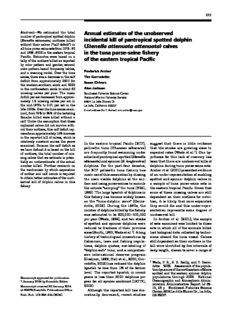
01 Archer FISH BULL 102(2).

DTIC ADA442146: Performance of Polymer-Encased Concrete Walls Subjected to Blast Loads

c - Alaska District
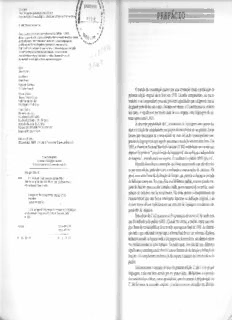
C: A linguagem de programação - Padrão Ansi

Caracterización de capacidades

Healthcare operations management
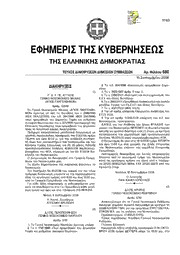
Greek Government Gazette: Part 7, 2006 no. 680

What Diantha Did

Secret Diary of Elisabeth Leseur
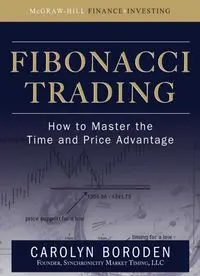
Fibonacci Trading
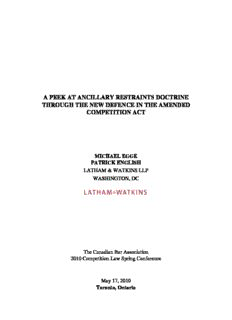
Canada Ancillary Restraints Article
